Hello, HIVE DIYers. My name is Andres. I'm a Venezuelan Luthier. There are some posts about my projects around DIY communities. I try to keep them as simple as I can while making them since an instrument is a very long project in the making. Here I bring you the lucky number 7. It's my seventh string instrument. It's a Venezuelan Cuatro which I named Mardí.
Neck
This piece holds the fretboard. It is where the actual pitch of notes is produced by shortening the length of the strings. Well, actually, the neck is the structure that connects the body of the instrument to the headstock, where the tuning machines rest. This long piece of wood is either made in one piece of by making a cut and adding some other blocks. On its top end, the you find the head stock; on the other, the heel.
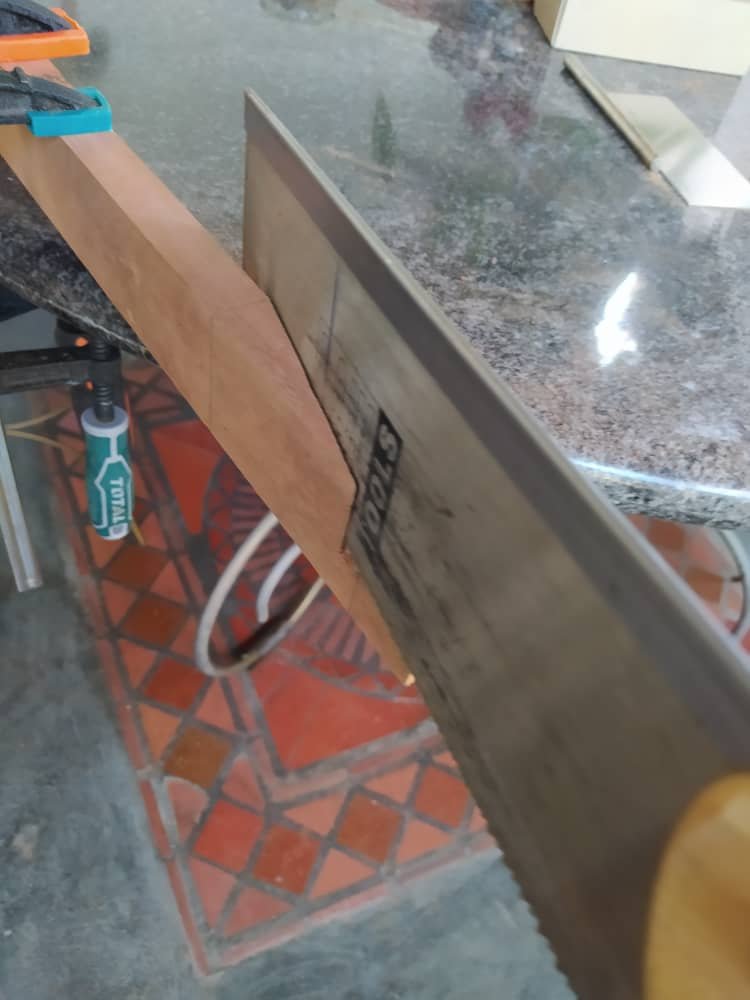
Head stock cut
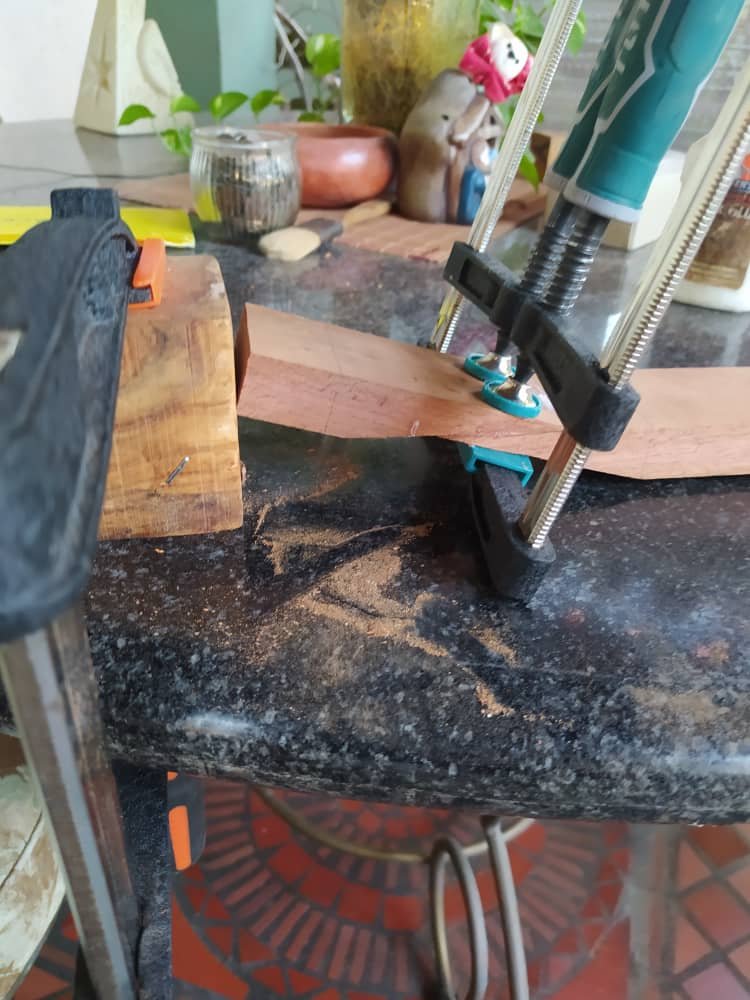
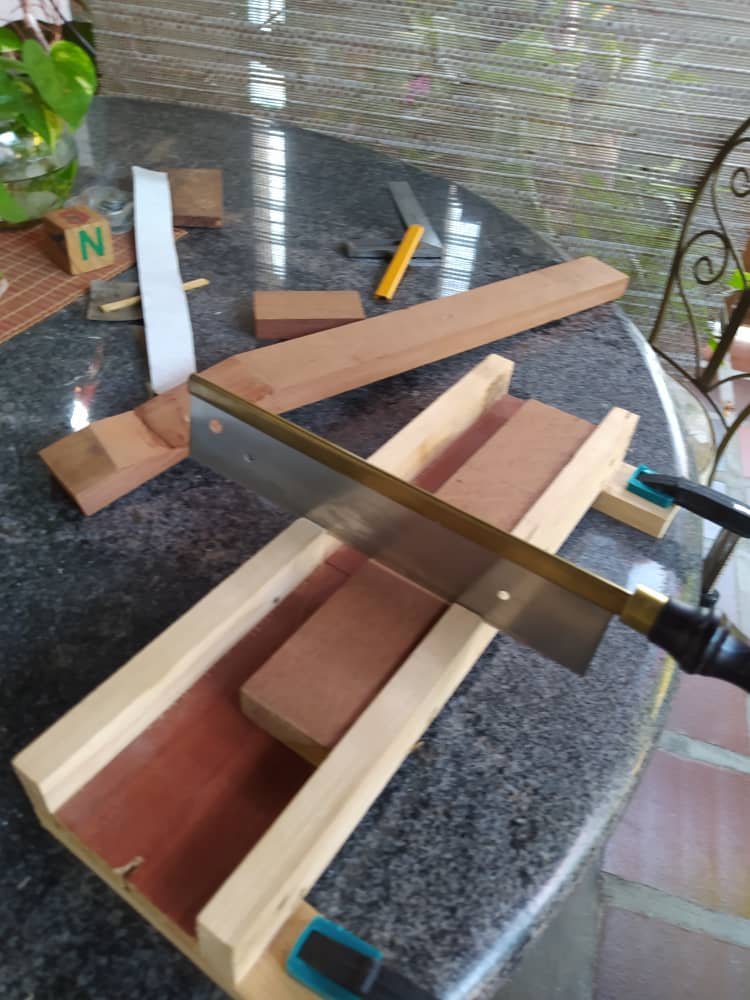
Making the blocks for the heel
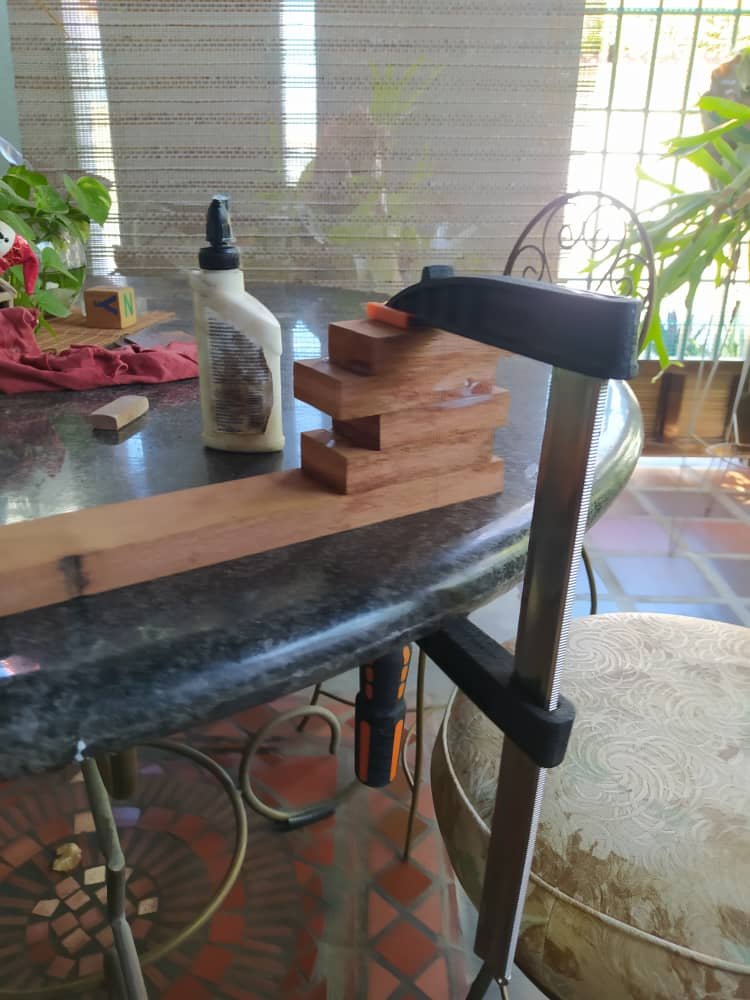

Preparing the cut for the sides
On the latter, a cut is made in order to fit the sides of the instrument (that is if you're using the Spanish method of construction). This part is carved into the shape of a heel, hence its name. On the head stock, crafters take the chance to make designs that have both an aesthetic function and an identification function. Luthiers try to make their instrument different from any others.
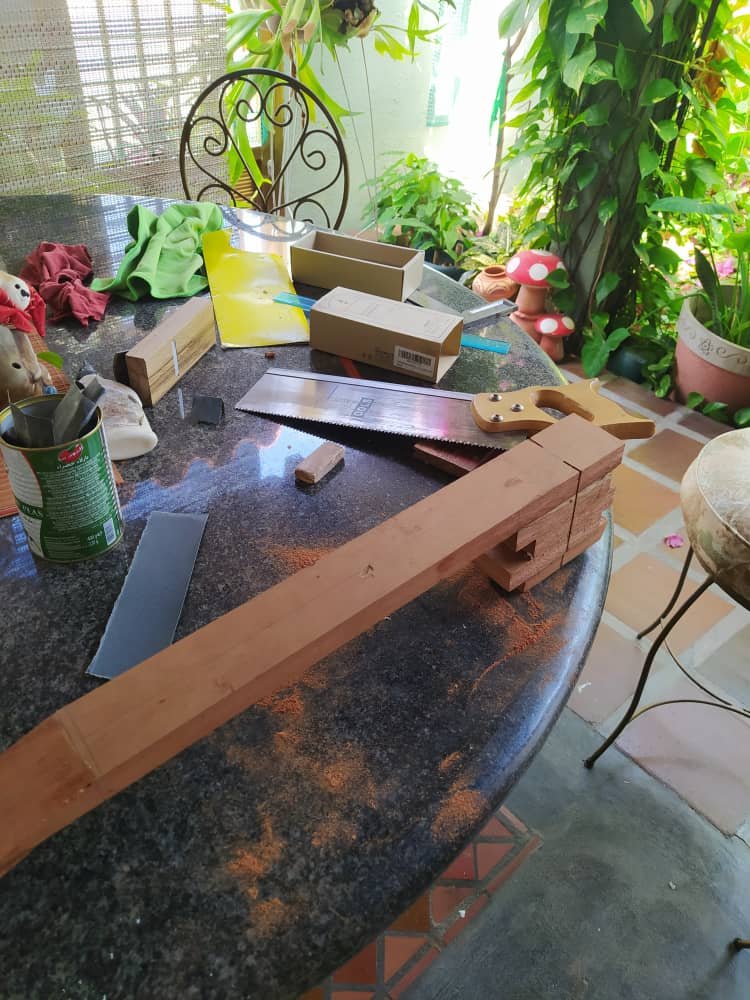

Flattening the heastock

Preparing an ornament for the head stock
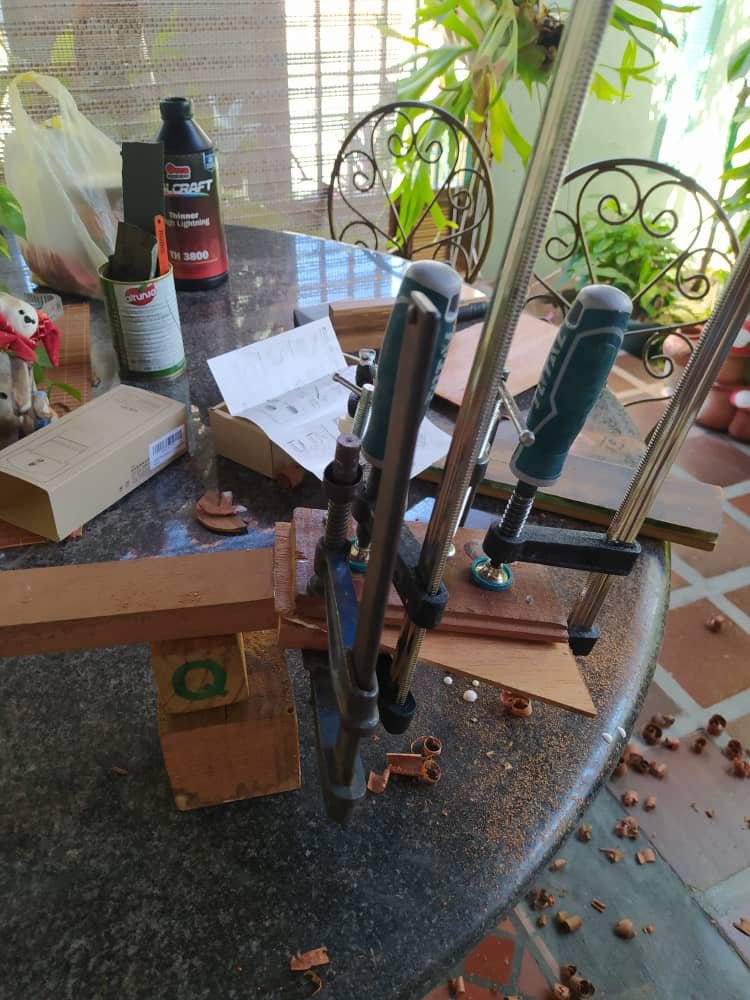
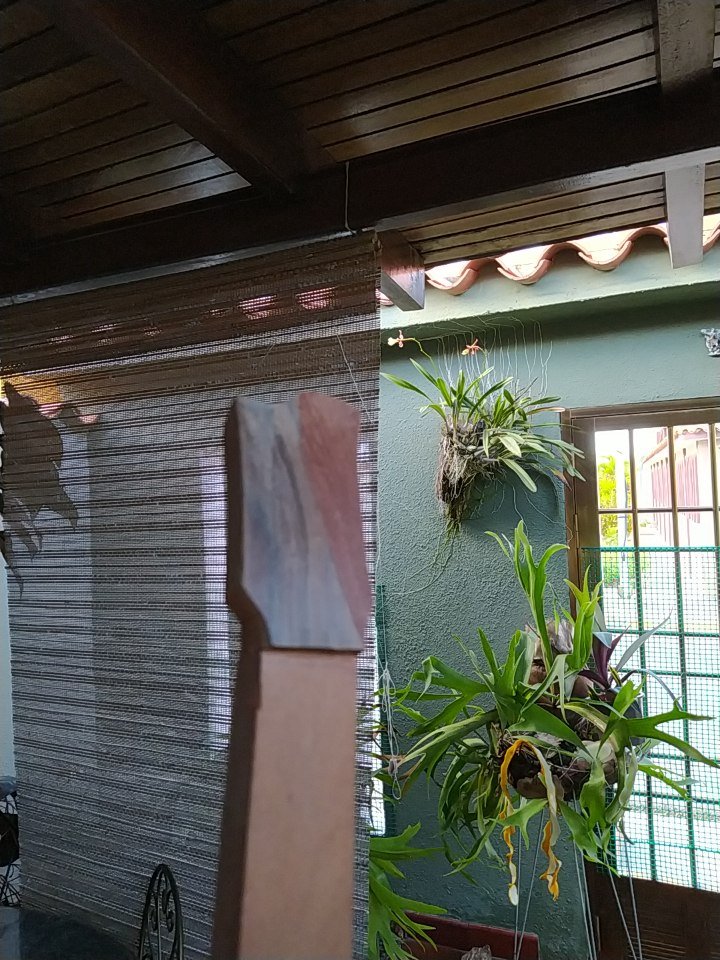
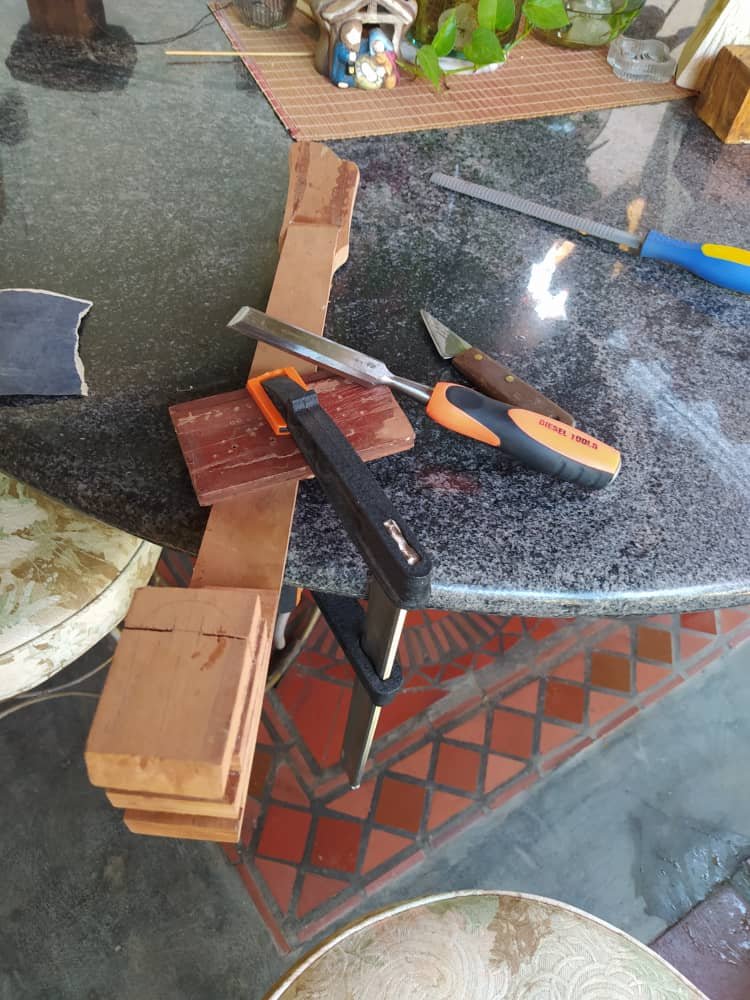

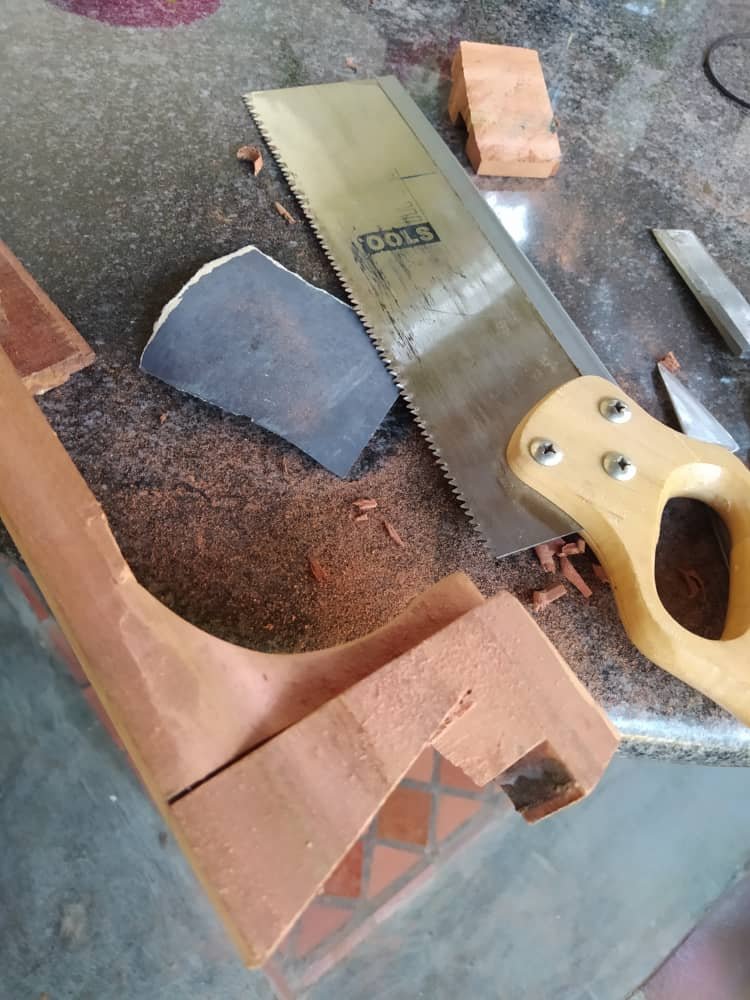
This is the rough shape of the neck. There's still more carving pending, but that work will be done after the fret board has been added to the piece.
Back and Sound Board
The sound board is the soul of any string instrument. That is if it's acoustic. Woods have different tone qualities according to their density, their grain, place of origin and many other factors. Since I'm a beginner in this art, I go for locally sourced woods. I already know which ones are the best for this job, but they are quite expensive. Also, I wouldn't want to ruin a piece like that. When my skills get better, I'll venture into using imported materials.
The sound board is made with two pieces of wood put together and then reinforced. The width of this varies according to the specifications of musicians and builders. Thinner boards tend to favor bass; thicker, treble. So, all the reinforcements applied to the back side of the sound board go around this. Of course, most of them are in place to prevent the piece from cracking under the tension of the strings. Since the body of a Venezuelan Cuatro is somewhat small, there's no much need to include a lot of reinforcements in it. This also helps us use as much of it vibrating area.
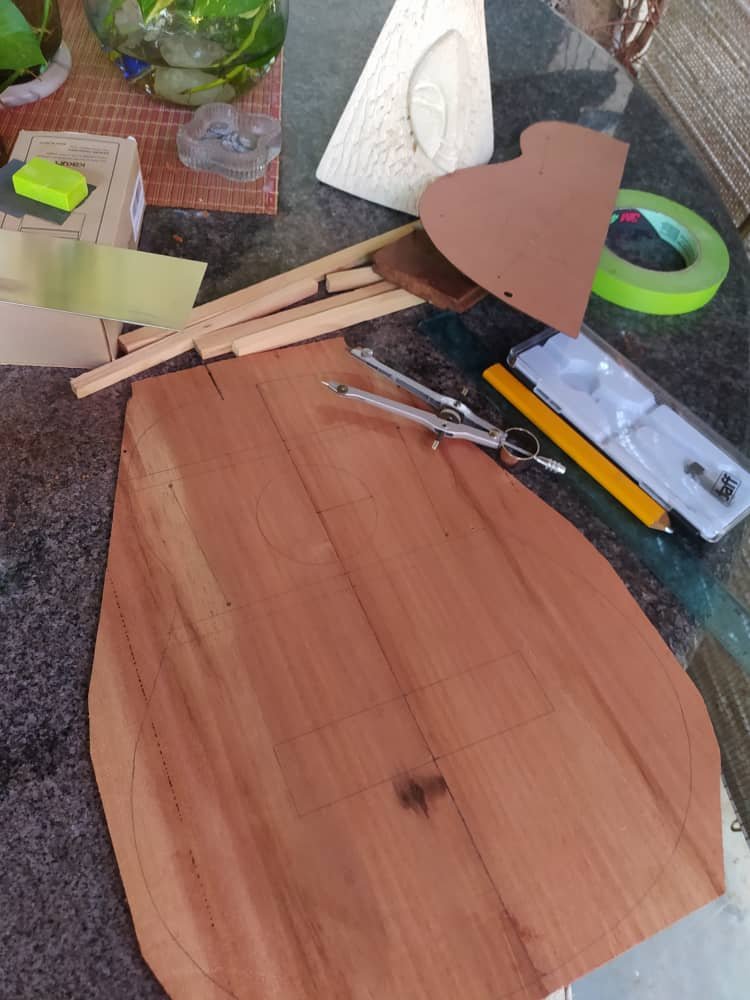
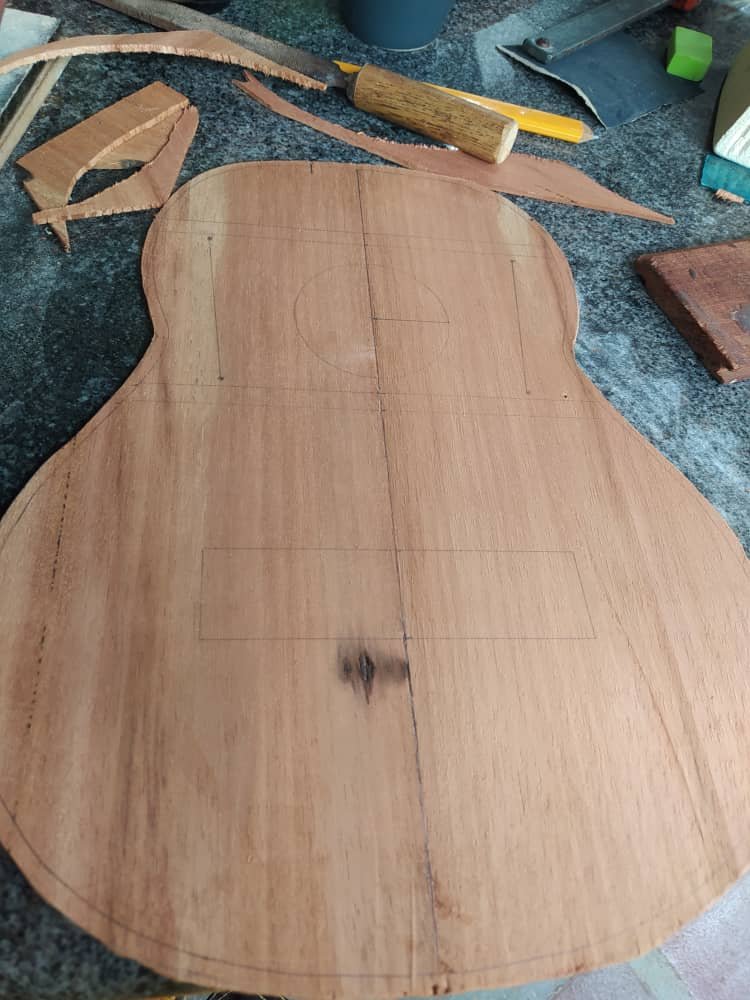
Sound board joined and the drawing of its internal structure
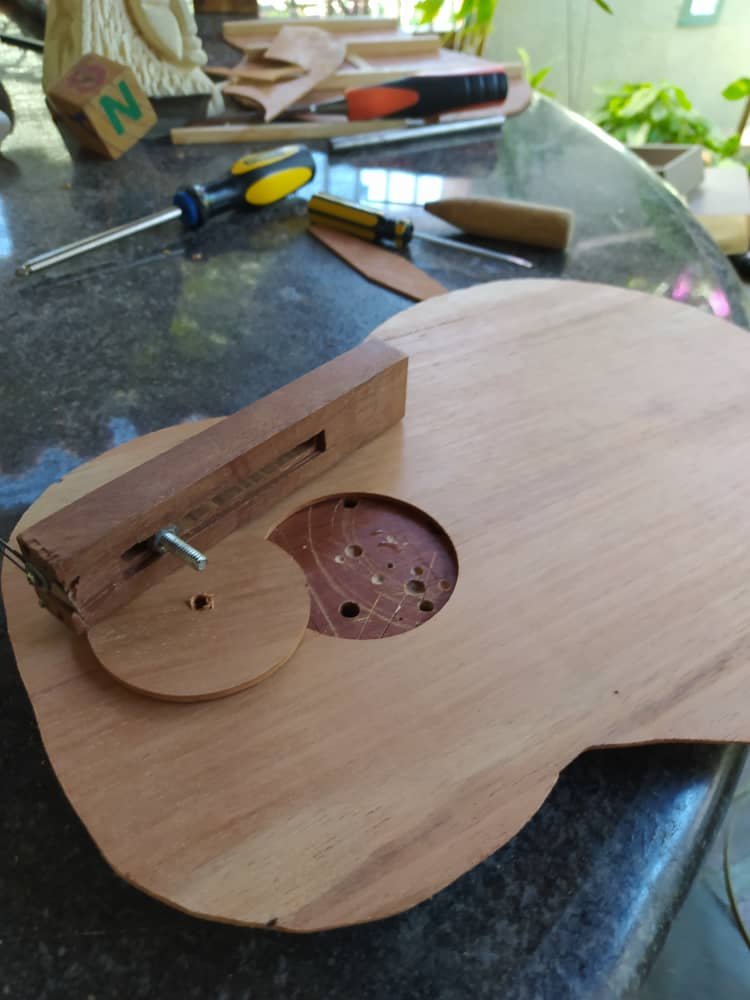
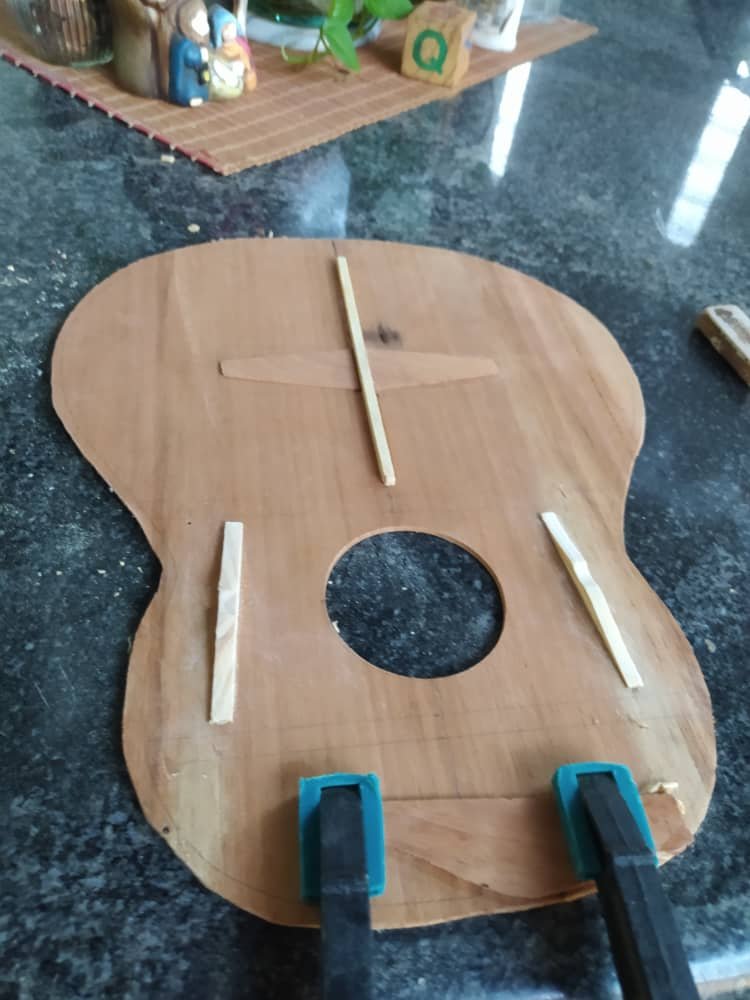

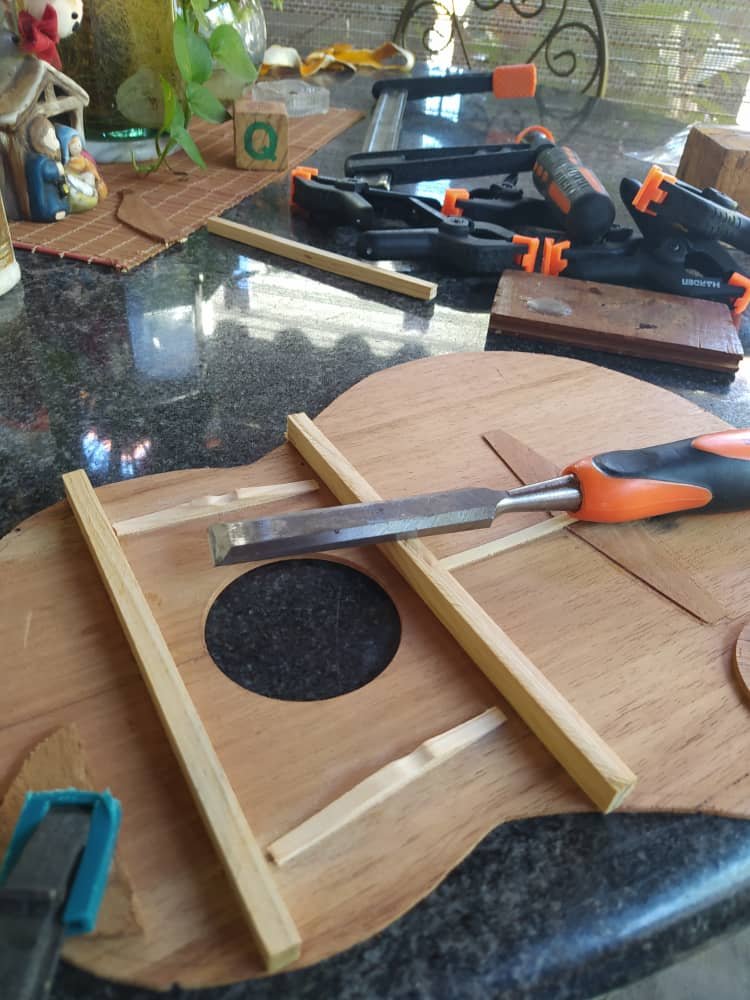
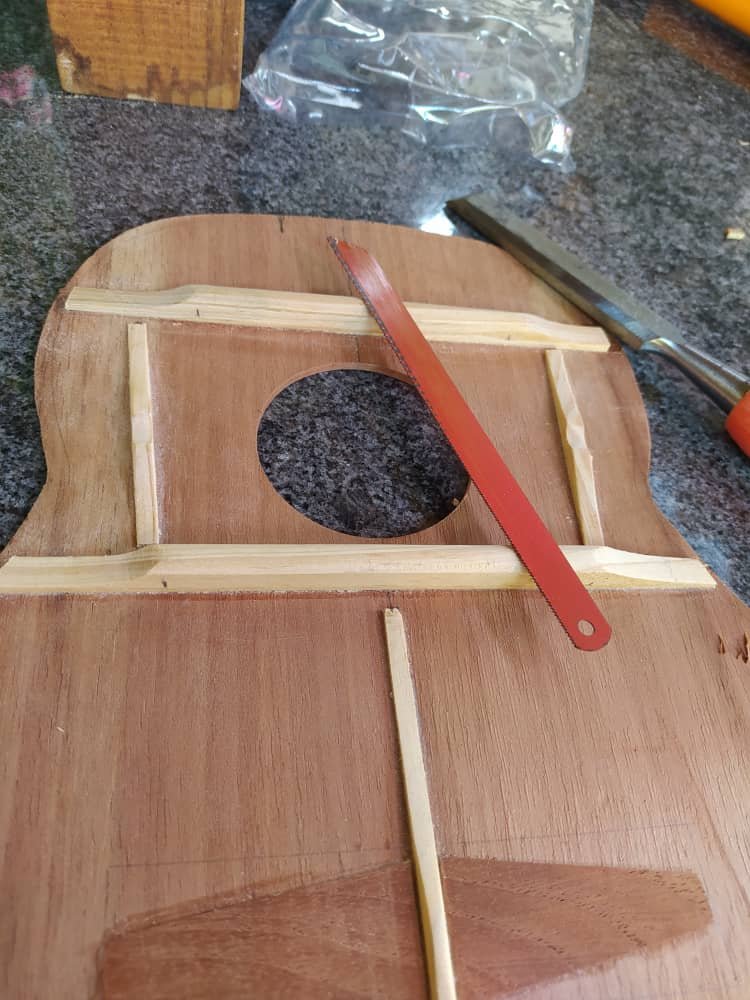
For example, there's one reinforcement on the lower side where the bridge will be placed. The one across this is to reinforce the joint. The ones at the top are for structural integrity.
The back of the instrument is not as important. However, in this particular instrument I'm trying something new. You see. Many guitars (if not all), have a slightly rounded back. This helps produce a better sound quality. Parallel surfaces tend to cause unwanted vibrations. So, after this test run, all my string instruments will include this feature. I wasn't using it before because I had no way to make the rounded reinforcements for the back and also no way to glue them.
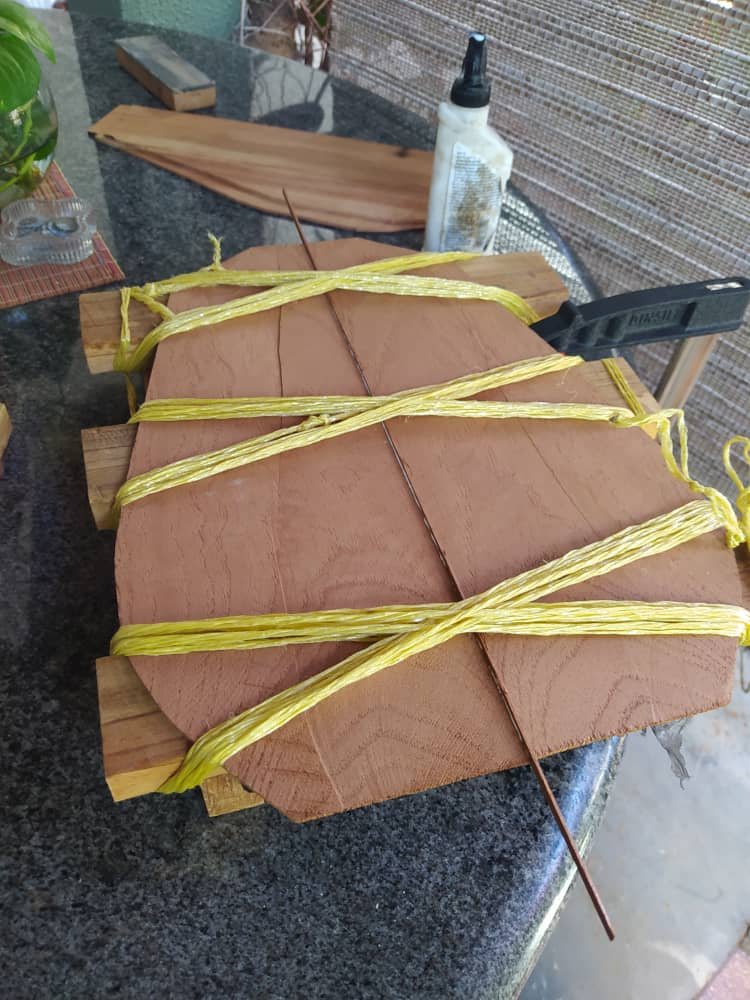

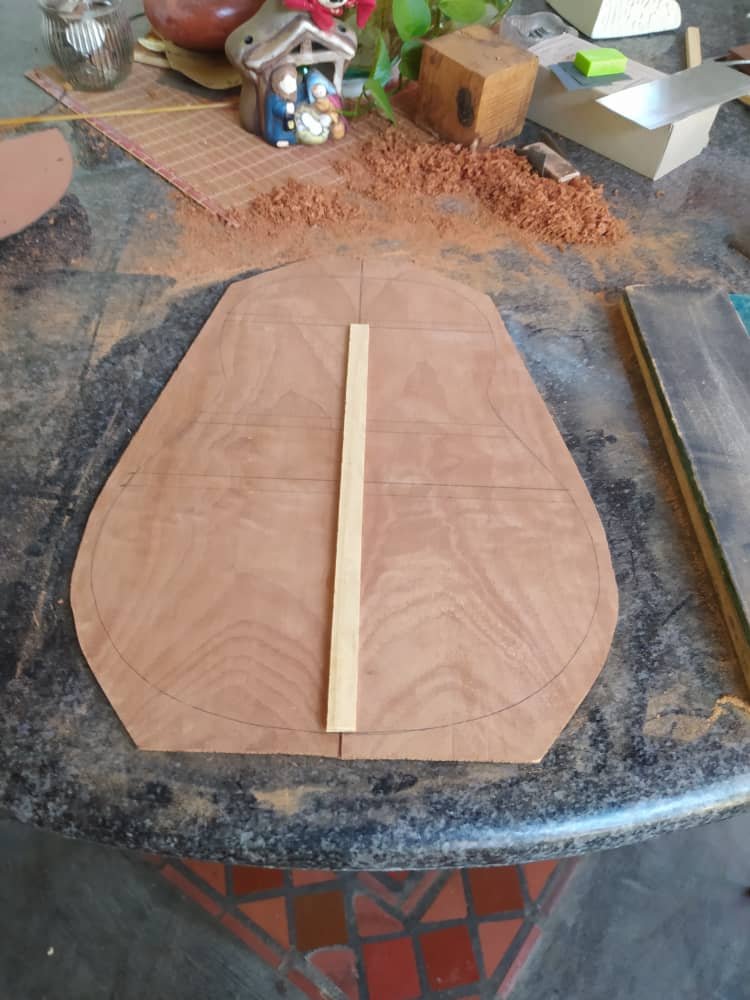
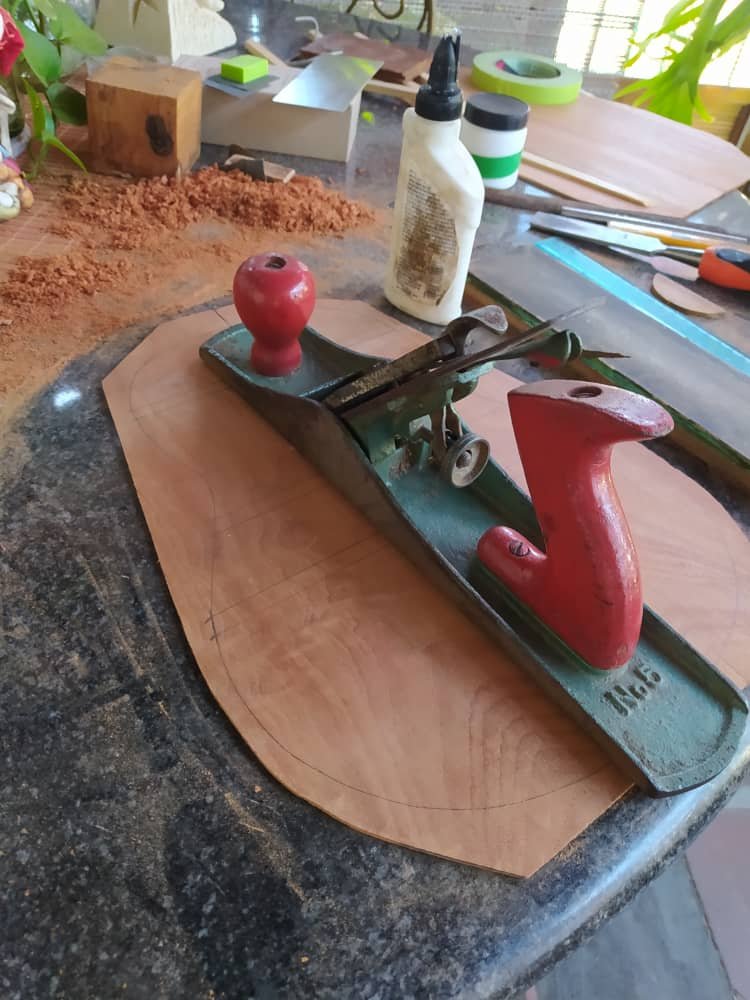
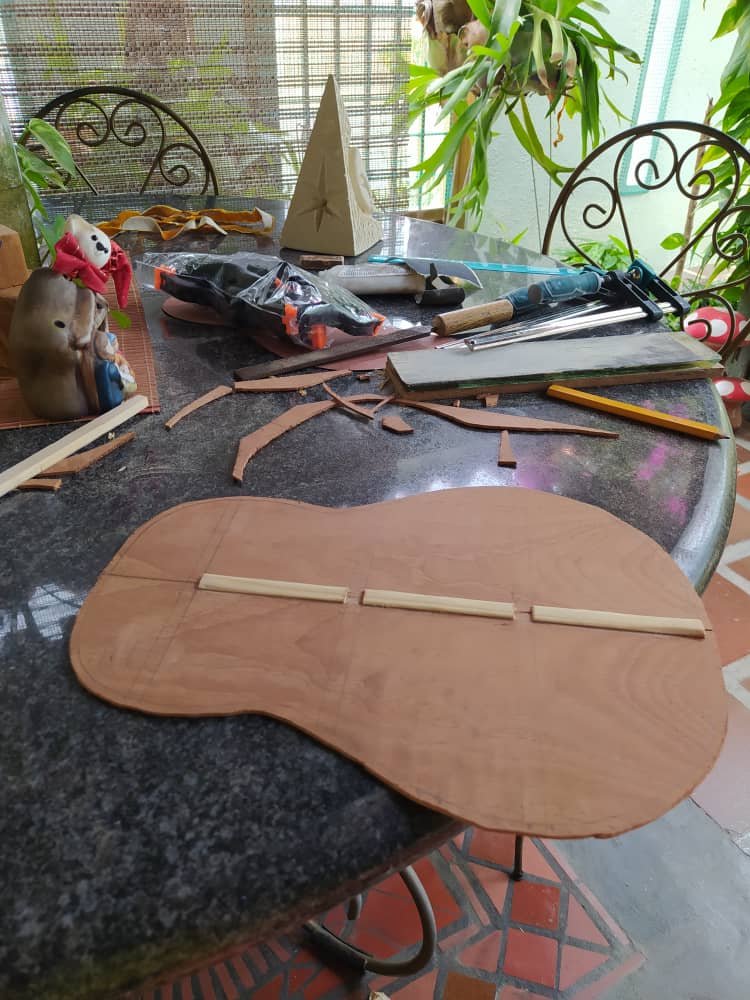
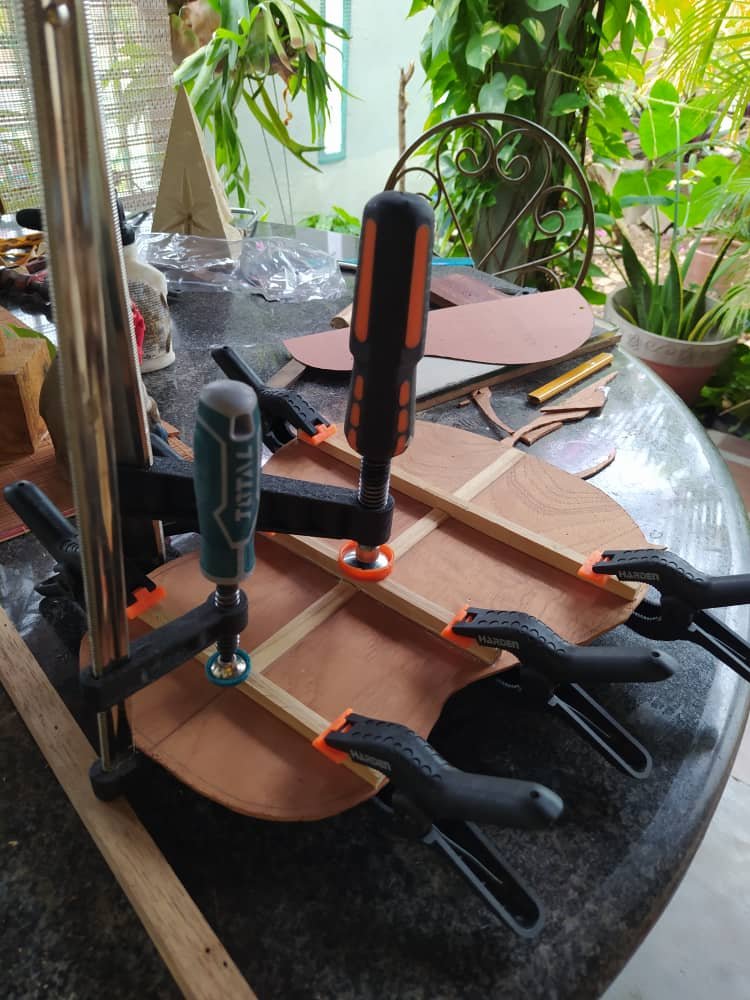
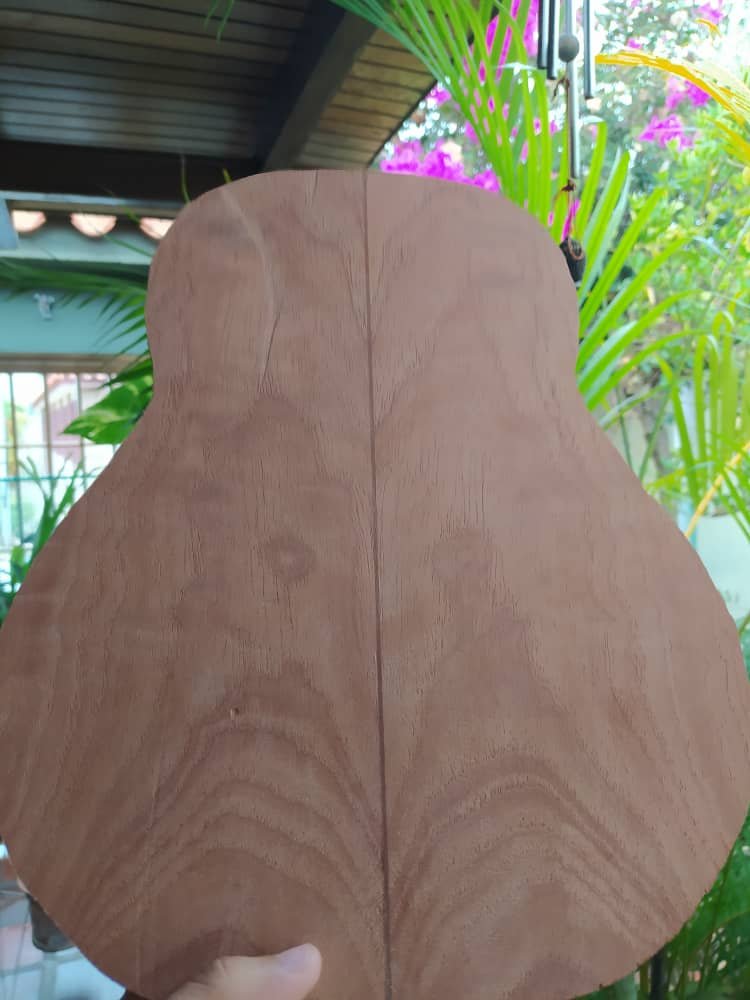
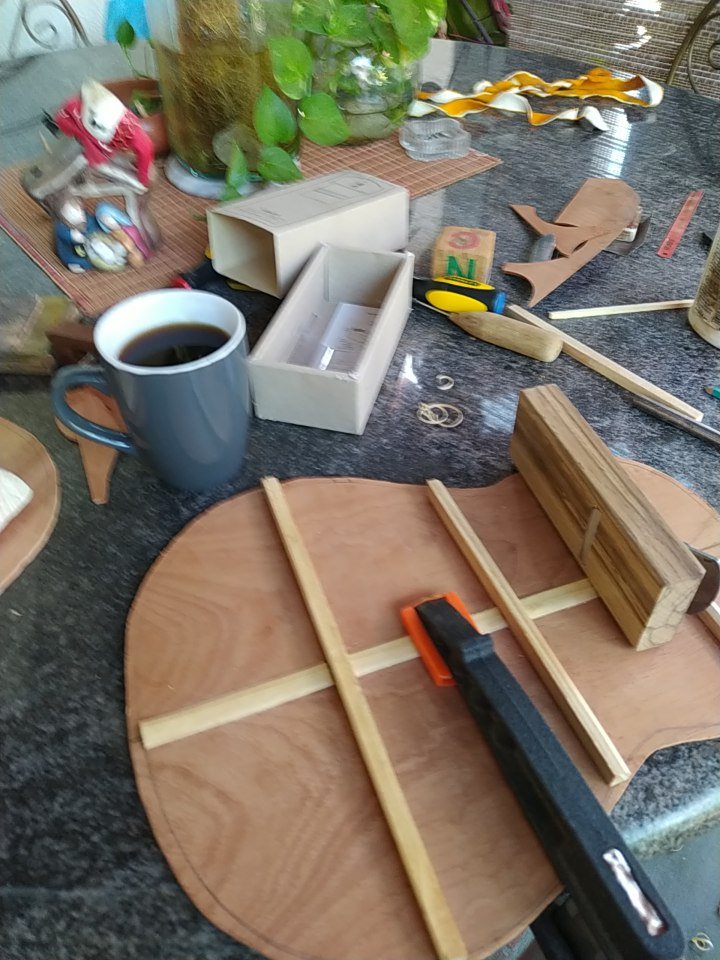
There's a lot of fine details to complete the making of any of these parts. All this steps take quite some time to finish but the results are worth it.
Set up
The last part is the set up for putting all the pieces together. The Spanish method uses a bed called solera for this. It is a place where you can put the soundboard to glue it to the neck (although you can do this step before just as I'll show in a picture in a moment). Then you use some angles, they can be made of wood or metal. These angles will go around the drawing of the instrument to limit the area and shape of the body. This is just one of the ways to make this. It is common to see moulds made specifically with these shapes and they are also easy to make if you have the machines.
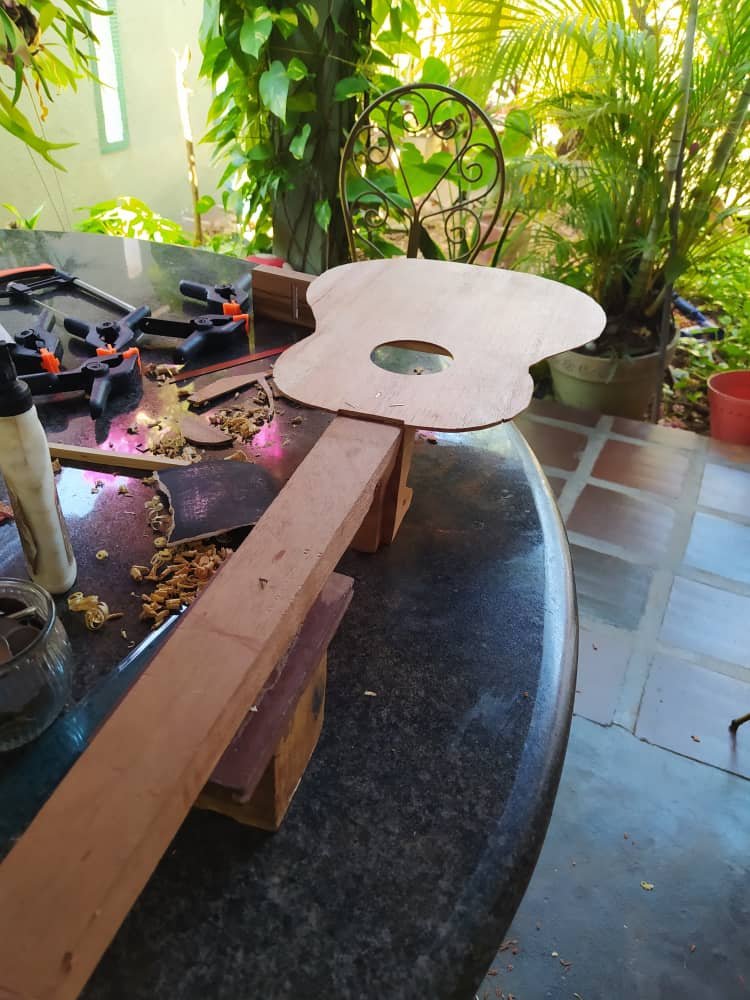
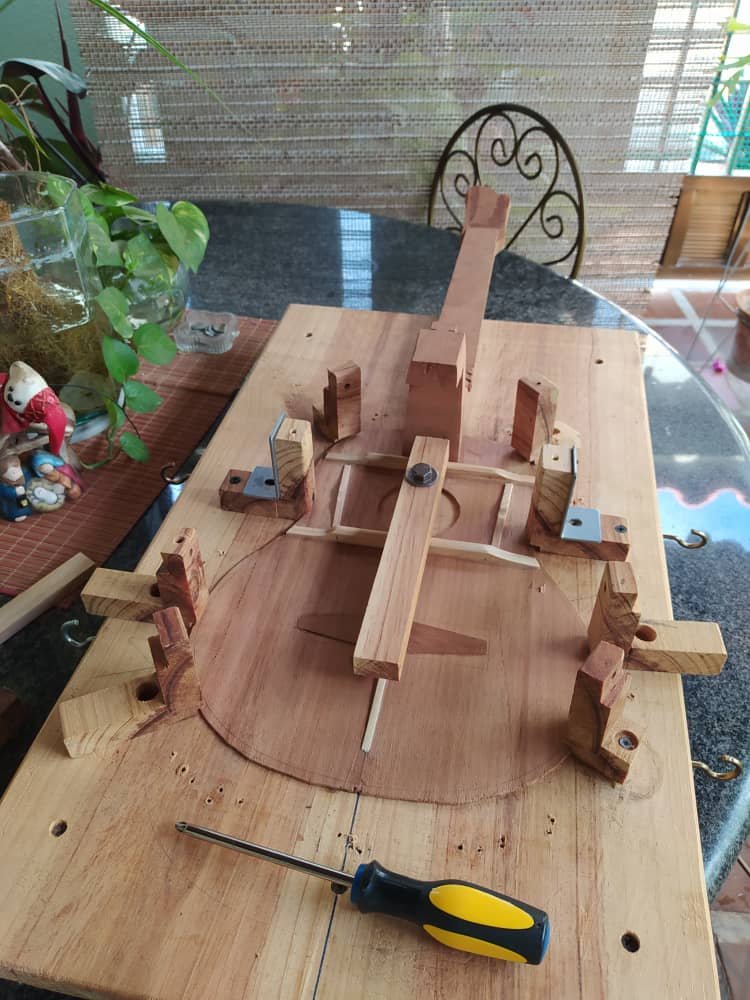
With the instrument on the solera, all is ready to get the rest of the pieces in place and complete the construction of the instrument. But that will come next time!
Oh I can't wait to see the completion. 😍
!discovery 29
It will come in due time!
This post was shared and voted inside the discord by the curators team of discovery-it
Join our community! hive-193212
Discovery-it is also a Witness, vote for us here
Delegate to us for passive income. Check our 80% fee-back Program
Your content has been voted as a part of Encouragement program. Keep up the good work!
Use Ecency daily to boost your growth on platform!
Support Ecency
Vote for new Proposal
Delegate HP and earn more
What kind of wood are you using for this instrument?
I've been trying to pin point the name of this one. We call it "Moriche" in Spanish. But that's a local name. When I find the scientific name, I'll add that info to the post.
Thank you for sharing this amazing post on HIVE!
Your content got selected by our fellow curator @stevenson7 & you just received a little thank you via an upvote from our non-profit curation initiative!
You will be featured in one of our recurring curation compilations and on our pinterest boards! Both are aiming to offer you a stage to widen your audience within and outside of the DIY scene of hive.
Join the official DIYHub community on HIVE and show us more of your amazing work and feel free to connect with us and other DIYers via our discord server: https://discord.gg/mY5uCfQ !
If you want to support our goal to motivate other DIY/art/music/homesteading/... creators just delegate to us and earn 100% of your curation rewards!
Stay creative & hive on!